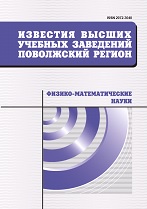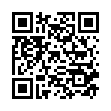|
This article is cited in 2 scientific papers (total in 2 papers)
Mathematics
The inverse problem of determining the inhomogeneity parameters of bodies located in free space
M. Yu. Medvedik, R. O. Evstigneev, E. A. Gundarev
Penza State University, Penza
Abstract:
Background. Inverse problems are applied in many areas of knowledge electrodinamic, for example, in medicine, physics, astronomy and geophysics, and they they apply for identification structure of the different bodies. This is due to the fart that the solutions of inverse problems describe various important properties of the media under study, such as the wave propagation velocity, density, dielectric and magnetic permeability, elasticity parameters, conductivity, and the location and properties of inhomogeneities in the region of inaccessibility. Such information is very important for researchers in areas where penetration is either dangerous or even impossible. Materials and methods. Using the obtained values of the field measurement at external points (observation points), a linear integral equation of the first kind is solved and the inhomogeneity is calculated from the explicit formula. The integral equation is solved by the collocation method. Results. The inverse problem of reconstructing the dielectric constant of an inhomogeneous body in free space is investigated. A diffraction field is obtained at observation points, which is necessary for the further solution of the problem under study, which can also be obtained experimentally. Further we arrive at the determination of inhomogeneities inside the body. Conclusions. When using this method, the choice of the initial approximation is not required. Besides, this method allows you to work with large computed grids and identify more than 1000 heterogeneities. The proposed method also allows one to reconstruct the dielectric constant of an anisotropic body and a body with complex dielectric permittivity.
Keywords:
diffraction problem, inverse problem, body's inhomogeneity.
Citation:
M. Yu. Medvedik, R. O. Evstigneev, E. A. Gundarev, “The inverse problem of determining the inhomogeneity parameters of bodies located in free space”, University proceedings. Volga region. Physical and mathematical sciences, 2018, no. 4, 50–61
Linking options:
https://www.mathnet.ru/eng/ivpnz138 https://www.mathnet.ru/eng/ivpnz/y2018/i4/p50
|

| Statistics & downloads: |
| Abstract page: | 50 | | Full-text PDF : | 11 | | References: | 19 |
|




 Contact us:
Contact us: Terms of Use
Terms of Use
 Registration to the website
Registration to the website Logotypes
Logotypes








 Citation in format
Citation in format 
